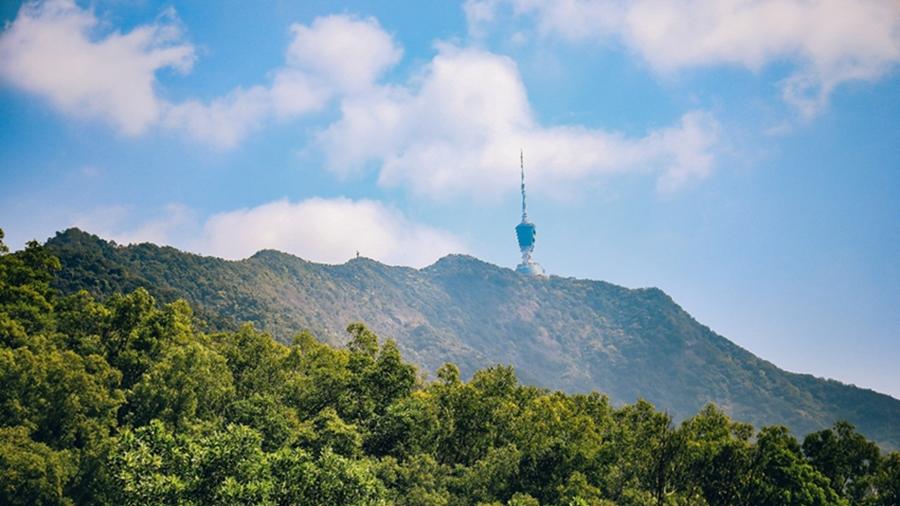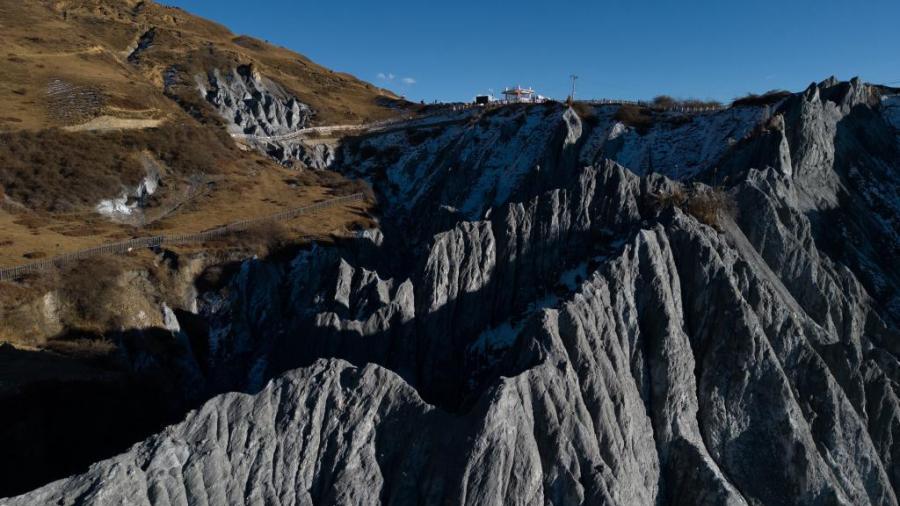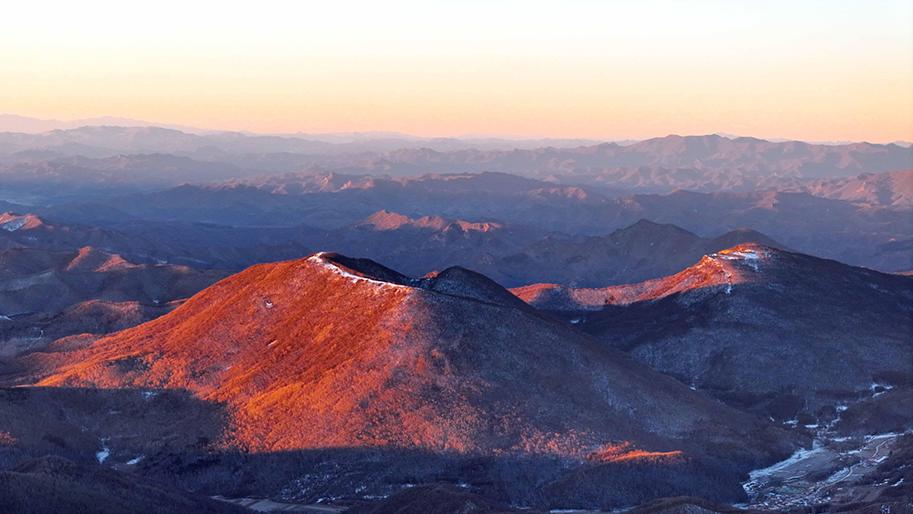Ice-cutting festival heralds promising northeast China winter tourism
HARBIN, Dec. 8 (Xinhua) -- In the presence of a biting wind, fur-clad workers wielded steel chisels in tackling the frozen surface of the Songhua River, producing a large crystalline chunk of ice to the cheers of spectators in Harbin, capital of northeast China's Heilongjiang Province.
The ice chunk, dubbed the "first ice" of this year, was harvested amid the rhythmic chants of workers, signaling the start of Harbin's annual ice-cutting season on the Songhua River, which winds through the city.
This year, this iconic ice-cutting festival in Harbin, one of China's most popular ice-and-snow tourism destinations, attracted thousands of tourists from home and abroad on this bitterly cold Saturday.
Harbin, often called the "Ice City," has gained widespread fame for its abundant ice and snow resources ad lively winter tourism scene.
Last year, Harbin became a viral sensation on Chinese social media, earning top spot on many travelers' winter wish lists. By reviving traditional events like ice collecting, the city has started preparing early for another surge in winter tourism this season.
"From the kick-off ceremony onward, we spend 20 to 30 days every winter harvesting ice from the frozen river. The colder it gets, the busier we are," said Wang Zhan, a veteran ice harvester.
"During peak times, nearly a thousand ice collectors may work together, harvesting up to 10,000 cubic meters of ice daily," Wang added.
Wang explained that ice chunks must be harvested from river sections with both stable water flow and quality to ensure uniform density and clear texture. Once the site is chosen, he and his co-workers wait for the ice layer to reach a thickness of at least 30 centimeters before beginning the process.
"We start by marking the designated area and carving out the shape of the blocks using mallets and chisels," Wang said. "Once that's done, we switch to chainsaws to cut the ice into blocks measuring 1.6 meters long and 0.8 meters wide, which are then lifted from the river for the purpose of transportation."
With more than a decade of ice-cutting experience under his belt, Wang has grown accustomed to the chorus of clattering chisels and roaring chainsaws. He expressed joy at seeing the ice-collecting tradition, along with local customs and delicacies, reaching a wider audience through this event.
"I'm really impressed by thunderous drums, ceremonial liquor, and showy red silk ribbons at the ceremony. It's so lively! I've never seen such an interesting northern folk tradition," said Qiu Mengqi, a Gen Z tourist from east China's Anhui Province -- her eyes wide with wonder as she continuously snapped photos and recorded videos.
Even before leaving the ice-cutting site, many tourists like Qiu, still immersed in the festive atmosphere, were eagerly anticipating their "reunion" with the ice chunks.
Within several days, the ice chunks Wang and his co-workers collected will be transformed into spectacular sculptures to be displayed at the nearby edition of Harbin Ice-Snow World, which is set to open in mid-December.
As one of China's most iconic winter theme parks, Harbin Ice-Snow World attracted over 2.7 million visitors with its stunning ice sculptures and winter-themed attractions in 2023.
According to Sun Zemin, deputy director of the sales and marketing department of Harbin Ice-Snow World Park Co., Ltd., the ice-cutting festival signals the unveiling of Harbin's winter glamour, and has been attracting an increasing number of tourists over the years.
"To ensure a steady supply of quality ice, we will select and store a batch of high-quality ice chunks in advance, which will be used in the following winter season. Every step of the process, from harvesting and transporting the ice to construction, is carefully monitored," Sun told Xinhua.
According to sources with Harbin Ice-Snow World, the park will expand from 810,000 square meters to a massive 1 million square meters this year. The amount of ice and snow used will also increase to 300,000 cubic meters, further enhancing the scale and grandeur of this event.
Apart from constructing the Ice-Snow World this year, a portion of the ice chunks will also be reserved for use as decorations at 2025 Asian Winter Games venues, he said.
According to Qi Bin, deputy director of the Heilongjiang provincial department of culture and tourism, the peak winter tourism season this year will coincide with the Asian Winter Games, which is expected to further fuel interest in both winter sports and ice-and-snow tourism.
Heilongjiang is committed to supporting the ice-and-snow economy and generating growth opportunities for the local economy, Qi added.
The surge in winter tourism in Harbin is part of a broader trend across China's booming ice-and-snow industry. Experts attribute the rising popularity of winter sports to the success of the 2022 Beijing Winter Olympics, which significantly boosted interest in winter sports and tourism in China.
China has unveiled an ambitious plan to grow its ice-and-snow economy, targeting winter sports, tourism and equipment manufacturing as key drivers of economic growth, with the projected value of this economy expected to reach 1.5 trillion yuan (about 208.77 billion U.S. dollars) by 2030.
Photos
Related Stories
Copyright © 2024 People's Daily Online. All Rights Reserved.









